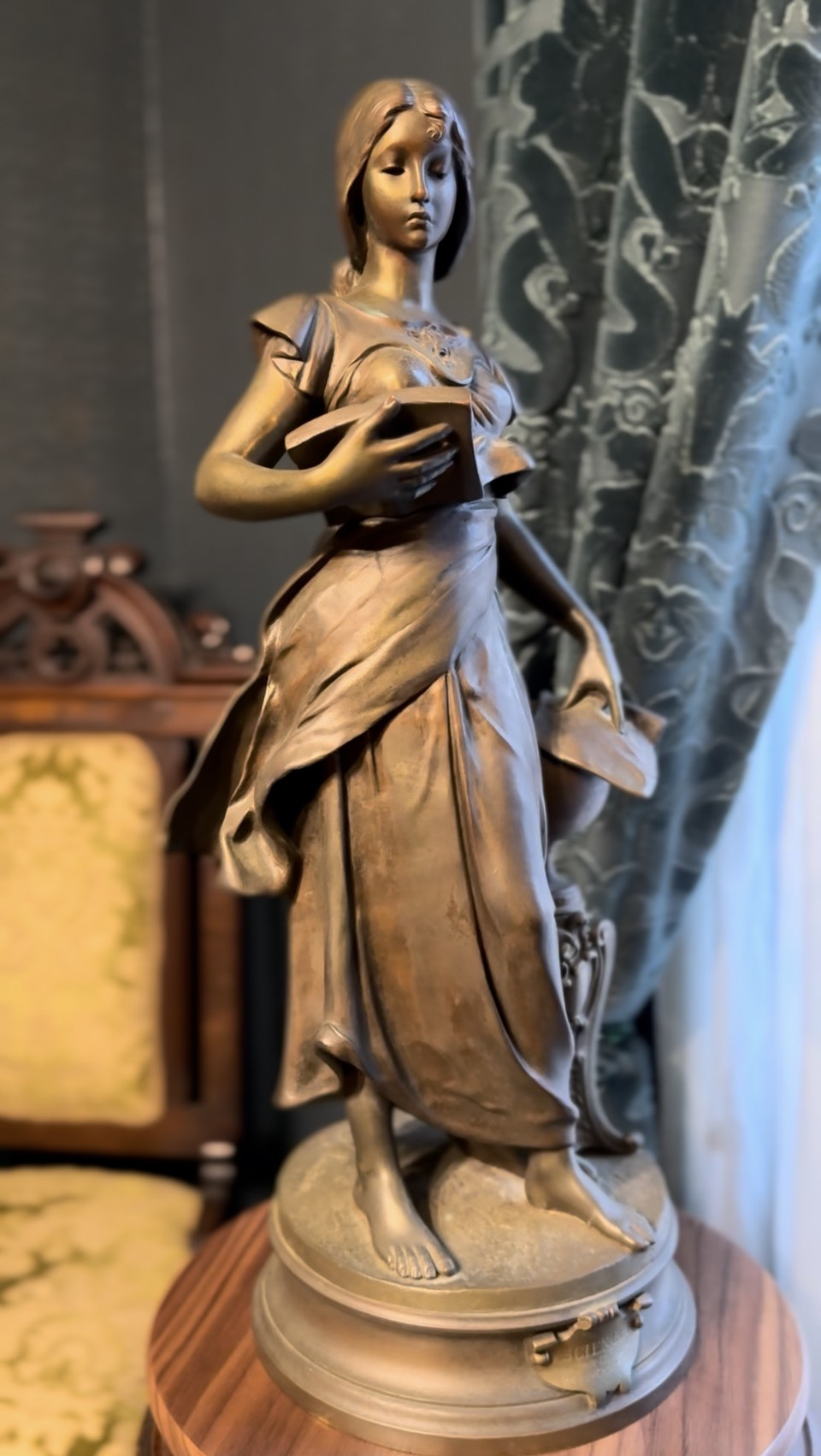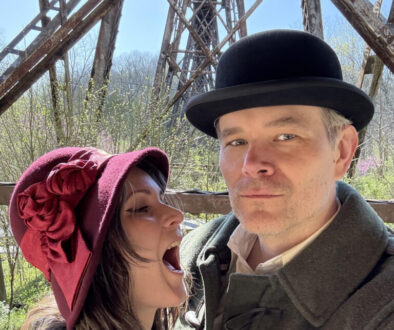Science and Magic

On Allegories
Many of the artifacts that visitors see piled high upon our bookcases were perilously purloined from the collections of infamous necromancers, or bargained from fell powers at dreadful cost.
There is a clock that only tolls its bells once a year, whether having been wound or not. There is a theodolite used long ago without success (so far as we know) to triangulate the position of Shangri-La. There is a silver cherub under glass which balances two vials, one supposedly containing black sand collected from the river Styx, and the other housing the single tear of an angel.
Some, however, are just old things that we thought were lovely and purchased in the conventional fashion.
This bronze was cast in the late 19th century by the French sculptor, Henri Levasseur. It is an allegorical sculpture depicting the personification of Science.
The book of theory and practice, and the mathematical notes draped across a globe make perfect sense. The armored chest piece that looks more appropriate to the battlefield than the laboratory is a bit more puzzling. Still, bare feet notwithstanding, we understand her decision to be a bit more modest than your typical allegory.


